Charles Atkins's Blog
December 18, 2019
Abstinence,Death, and How to Change the Opioid EpidemicBy...
Abstinence,Death, and How to Change the Opioid Epidemic ByCharlesAtkins, MD
(First published in the CT Mirror October 25, 2019)
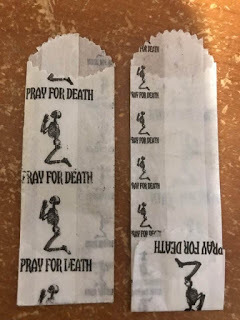
I chair death reviews. It’s part of my job as a medicaldirector for a mental health and substance abuse agency. In recent years thebulk of deaths have been from opioid overdoses, now mostly fentanyl. The most-commonthemes are people who just left rehab, a detox program, or were released fromprison. What has become clear is that abstinence-only approaches and programsfor opioids don’t work, yet we continue to promote, practice, and pay for modelsthat are ineffective and deadly. While some opioid data is open to interpretation, certainfigures hold up. Over the course of a year, about 80 percent of people who wantto be substance free will have at least one slip, closer to 90 percent forpeople with more severe problems with drugs and alcohol and for those who alsohave mental health issues or have been incarcerated. These lapse rates hold true regardless of the drug, fromtobacco to heroin. But a lapse doesn’t equate to failure. It could be a one- ortwo-time thing and then they’ll return to their earlier goal to be substancefree. Here’sthe disconnect. A lapse with alcohol, tobacco, or cocaine might be unwanted, butit probably won’t kill you today. Yes, cigarettes will eventually give you cancer, heart disease, and a stroke, and afterforty years of hard drinking, your liver dies… and so do you. But not today. Thisis where opioids differ and why abstinence approaches in the age of Oxycontin,black tar heroin, and now fentanyl are dangerous and, in the face of hard data,possibly immoral. Studies that have looked at 30-day abstinence programsfor opioids show that over half their graduates relapse within a week ofdischarge, often on the ride home. Forty years ago, when the heroin on thestreet was less than 10 percent pure, that might not have killed you. But inour current epidemic, which involves high-octane fentanyls that start at 50 to100times more potent than morphine and carfentanil that can be over 10,000 timesstronger, all it takes is two bags that cost six bucks on the streets of NewBritain, Hartford, or New Haven and we have another death. Daily opioid users become dependent on the drugs anddevelop tolerance. They need to take more drug to achieve the same effect, andshould they go even a few hours without, they experience withdrawal symptoms thatleave them sick, incapacitated, miserable, and craving. With traditional detoxprograms, people are weaned off the opioids, kept in a sheltered environment,and then discharged, often back to the same environment, stresses, and peoplewith whom they used. Their tolerance to the drugs is gone, and a dose they oncefound safe is now fatal. Many parents who’ve lost children echo stories of howtheir child used a bag of fentanyl-adulterated heroin on the way home fromtreatment and it killed them. But people like abstinence. I do too. How lovely ifsomeone could take a problem behavior and just stop. And in those 80 and 90 percentrelapse rates are 10 and 20 percent minorities who manage to quit and stay quit—someon the first try, some on the fiftieth. But preferences and likes that are notsupported by data have no place in medicine and public health policy. Yet wecontinue to promote models of care that kill people with opioid use disorders. Eventhough we know these are chronic conditions that will have lapses, we deny andrestrict treatment based on positive drugs screens and the very behavior (druguse) that brings the person in for help. Nowhere else in medicine do we takesuch a punitive stance. I can’t imagine telling a person with insulin-dependentdiabetes that if they continue to binge on Ben and Jerry’s, we’ll withholdtheir medication because by giving it to them we’re “enabling” theirdestructive behavior. We don’t do that. We work with that person—provideeducation, help them establish workable treatment goals, and nudge them along.It’s a harm reduction, risk-lowering strategy. For those unfamiliar with harm reduction, it describespublic health approaches to risky behaviors. Every time you put a seatbelt on,you’ve performed an act of harm reduction. Yes, there’s still the chance thatyou’ll get hit on the highway, but you’ve improved your odds of survival. Harmreduction strategies for people who use drugs—including opioids—have beenaround for decades and include sterile needle exchange, rapid access toeffective medications for opioid use disorders (methadone, buprenorphine,naloxone), overdose kits (naltrexone/Narcan), decriminalization of low-leveldrug-related behaviors, education, free condoms, and safe and supervised placesfor people to use their drugs so they don’t die if they get in trouble. Outcomesfrom many studies are overwhelmingly positive, especially in countries who’veused these approaches for decades. Results include greatly decreased rates ofdisease transmission (HIV/AIDs, Hepatitis), lower medical problems related toinjection drug use, fewer deaths, fewer incarcerations, higher quality of life,and lower overall cost to the taxpayer. Inour current avalanche of overdose deaths treatment algorithms must consider thereality that most people will relapse. But they need not die because of it. So,as we face a central question of our opioid epidemic, how do we turn back thistide of death? Answers stare back at us. We have to step away from abstinence-onlyapproaches, such as arbitrary “three-strikes and you’re out” policies and detoxprotocols that don’t include the use of proven medications. And for those whocontinue to use street drugs and are not at the point of entering treatment,community outreach is key, and it needs to include access to sterile needleexchange, overdose kits (naloxone/Narcan), education about safer drug use, anopen invitation to treatment that is readily available, and safe places forpeople to use their drugs.
Bio—Bio: Charles Atkins, M.D. is apsychiatrist, author, clinical trainer, and member of the Yale volunteerfaculty. His most recent book on thistopic is Opioid Use Disorders: A HolisticGuide to Assessment, Treatment and Recovery. His web site is www.charlesatkins.com
Published on December 18, 2019 10:00
Abstinence, Death, and How to Change the Opioid Epidemic...
Abstinence, Death, and How to Change the Opioid Epidemic By Charles Atkins, MD
(First published in the CT Mirror October 25, 2019)

I chair death reviews. It’s part of my job as a medical director for a mental health and substance abuse agency. In recent years the bulk of deaths have been from opioid overdoses, now mostly fentanyl. The most-common themes are people who just left rehab, a detox program, or were released from prison. What has become clear is that abstinence-only approaches and programs for opioids don’t work, yet we continue to promote, practice, and pay for models that are ineffective and deadly. While some opioid data is open to interpretation, certain figures hold up. Over the course of a year, about 80 percent of people who want to be substance free will have at least one slip, closer to 90 percent for people with more severe problems with drugs and alcohol and for those who also have mental health issues or have been incarcerated. These lapse rates hold true regardless of the drug, from tobacco to heroin. But a lapse doesn’t equate to failure. It could be a one- or two-time thing and then they’ll return to their earlier goal to be substance free. Here’s the disconnect. A lapse with alcohol, tobacco, or cocaine might be unwanted, but it probably won’t kill you today. Yes, cigarettes will eventually give you cancer, heart disease, and a stroke, and after forty years of hard drinking, your liver dies… and so do you. But not today. This is where opioids differ and why abstinence approaches in the age of Oxycontin, black tar heroin, and now fentanyl are dangerous and, in the face of hard data, possibly immoral. Studies that have looked at 30-day abstinence programs for opioids show that over half their graduates relapse within a week of discharge, often on the ride home. Forty years ago, when the heroin on the street was less than 10 percent pure, that might not have killed you. But in our current epidemic, which involves high-octane fentanyls that start at 50 to100 times more potent than morphine and carfentanil that can be over 10,000 times stronger, all it takes is two bags that cost six bucks on the streets of New Britain, Hartford, or New Haven and we have another death. Daily opioid users become dependent on the drugs and develop tolerance. They need to take more drug to achieve the same effect, and should they go even a few hours without, they experience withdrawal symptoms that leave them sick, incapacitated, miserable, and craving. With traditional detox programs, people are weaned off the opioids, kept in a sheltered environment, and then discharged, often back to the same environment, stresses, and people with whom they used. Their tolerance to the drugs is gone, and a dose they once found safe is now fatal. Many parents who’ve lost children echo stories of how their child used a bag of fentanyl-adulterated heroin on the way home from treatment and it killed them. But people like abstinence. I do too. How lovely if someone could take a problem behavior and just stop. And in those 80 and 90 percent relapse rates are 10 and 20 percent minorities who manage to quit and stay quit—some on the first try, some on the fiftieth. But preferences and likes that are not supported by data have no place in medicine and public health policy. Yet we continue to promote models of care that kill people with opioid use disorders. Even though we know these are chronic conditions that will have lapses, we deny and restrict treatment based on positive drugs screens and the very behavior (drug use) that brings the person in for help. Nowhere else in medicine do we take such a punitive stance. I can’t imagine telling a person with insulin-dependent diabetes that if they continue to binge on Ben and Jerry’s, we’ll withhold their medication because by giving it to them we’re “enabling” their destructive behavior. We don’t do that. We work with that person—provide education, help them establish workable treatment goals, and nudge them along. It’s a harm reduction, risk-lowering strategy. For those unfamiliar with harm reduction, it describes public health approaches to risky behaviors. Every time you put a seatbelt on, you’ve performed an act of harm reduction. Yes, there’s still the chance that you’ll get hit on the highway, but you’ve improved your odds of survival. Harm reduction strategies for people who use drugs—including opioids—have been around for decades and include sterile needle exchange, rapid access to effective medications for opioid use disorders (methadone, buprenorphine, naloxone), overdose kits (naltrexone/Narcan), decriminalization of low-level drug-related behaviors, education, free condoms, and safe and supervised places for people to use their drugs so they don’t die if they get in trouble. Outcomes from many studies are overwhelmingly positive, especially in countries who’ve used these approaches for decades. Results include greatly decreased rates of disease transmission (HIV/AIDs, Hepatitis), lower medical problems related to injection drug use, fewer deaths, fewer incarcerations, higher quality of life, and lower overall cost to the taxpayer. In our current avalanche of overdose deaths treatment algorithms must consider the reality that most people will relapse. But they need not die because of it. So, as we face a central question of our opioid epidemic, how do we turn back this tide of death? Answers stare back at us. We have to step away from abstinence-only approaches, such as arbitrary “three-strikes and you’re out” policies and detox protocols that don’t include the use of proven medications. And for those who continue to use street drugs and are not at the point of entering treatment, community outreach is key, and it needs to include access to sterile needle exchange, overdose kits (naloxone/Narcan), education about safer drug use, an open invitation to treatment that is readily available, and safe places for people to use their drugs.
Bio— Bio: Charles Atkins, M.D. is a psychiatrist, author, clinical trainer, and member of the Yale volunteer faculty. His most recent book on this topic is Opioid Use Disorders: A Holistic Guide to Assessment, Treatment and Recovery. His web site is www.charlesatkins.com
Published on December 18, 2019 10:00
August 26, 2015
Heroin: Epidemic of Shame, Death, and Silence
Published on August 26, 2015 05:36
August 13, 2013
EditorLiz Fitzgerald Interviews Caleb James, the author o...
EditorLiz Fitzgerald Interviews Caleb James, the author of HAFFLING
Liz: Tostart, your real name isn't Caleb James, it's Charles Atkins, why did youdecide to use a pen name?
Caleb: Yes,totally true. The major reason for goingwith a pen name is that HAFFLING is in a different genre from all my otherbooks. It's YA−although definitely foradults, as well. But I don't wantsomeone who really likes HAFFLING to reach for one of my dark psychologicalthrillers, like THE PRODIGY or CADAVER'S BALL and be disappointed, because theyare nothing like HAFFLING.
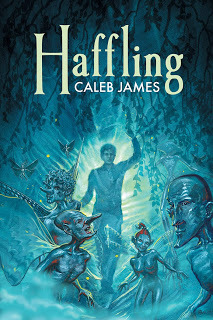 Liz: So, how many pen names do you use?
Liz: So, how many pen names do you use?Caleb: Atpresent I write under three names. Charles Atkins, which I use for adult mysteries and thrillers, CharlesAtkins, MD, which I use for my medical and clinical books, like THE BIPOLARDISORDER ANSWER BOOK, and now Caleb James for YA. I've also ghost written where my name doesn'tappear at all.
Liz: On toHAFFLING. Have you thought about writinga prequel? And what do you think aboutprequels?
 Caleb: Notbefore you asked, but it's an interesting question. In general, writers need to know a lot abouttheir characters' histories so in a sense a prequel for Alex, Alice and theirmother already exists. It's the story ofhow things fell apart for this family. It would be Marilyn's first trip to the Unsee, her seduction by Cedricand the horrible circumstances that drew Alex and Alice into the McGuire'shouse of horrors. It would also lay downthe origins of Alex's fairy, Nimby and why Marilyn and the Nevus family are soimportant to the scheming of mad Queen May.
Caleb: Notbefore you asked, but it's an interesting question. In general, writers need to know a lot abouttheir characters' histories so in a sense a prequel for Alex, Alice and theirmother already exists. It's the story ofhow things fell apart for this family. It would be Marilyn's first trip to the Unsee, her seduction by Cedricand the horrible circumstances that drew Alex and Alice into the McGuire'shouse of horrors. It would also lay downthe origins of Alex's fairy, Nimby and why Marilyn and the Nevus family are soimportant to the scheming of mad Queen May.Liz: It sounds like a pretty dark story.
Caleb: Yes, but Alex is a hero in the true sense. He saves his sister, kills the man whomolested her and is responsible for bringing to light decades ofwrongdoing. So while dark, thisunwritten prequel contains the story arc of a pretty good novel. Even the side themes of this much-youngerAlex figuring out how to reunite his family and coming to terms with being gay...andto having an annoying bare-breasted fairy on his shoulder.
Liz: I love that about Alex and HAFFLING, yes, he'sgay, but it's not exclusively a gay novel.
Caleb: Right, and that's the way I wanted it. Like in the beginning where Alex is layingdown the crap-fest that's his life. Hisbeing gay is just a part of who he is, and frankly the thought of having timefor a romance doesn't even register.
Liz: Clearly that doesn't last long. I love the way the relationship between Alexand Jerod comes about, and how you stretched things to where we don't even geta kiss till halfway through the novel.
Caleb: Timing romantic storylines requiresfinesse. You never want to make thingstoo easy for your lovers, because it's the tension−Does he like me? Is he even gay?−that keeps the reader turningthe pages. Obviously there are lots ofways to do this, such as boy gets boy, boy loses boy through some conflict ormisunderstanding, and boy gets boy again through the resolution of the conflictor misunderstanding.
Liz: So when's the next one coming out?
Caleb: The sequel is currently swimming in my head,but Charles Atkins, MD and Charles Atkins each have a book to get back to theirrespective publishers, so the sequel to HAFFLING, which has the working titleof EXILE, will likely have to wait till the winter.
Liz: Any hints what it will be about?
Caleb: Hmmm. I hate to talk about things not yet written, it's the one place I have abit of superstition about writing, that if you talk about things they losetheir momentum and their juice. But I'llgive you this, just as HAFFLING speaks to the magic of love, so too will EXILEtake the reader through a journey about the absolute transformative power oflove.
HAFFLING is available as both an e-book and paperback.
Purchase at , Barnes and Noble, or through other on-line sellers.
Published on August 13, 2013 02:26
Editor Liz Fitzgerald Interviews Caleb James, the author...
Editor Liz Fitzgerald Interviews Caleb James, the author of HAFFLING
Liz: To start, your real name isn't Caleb James, it's Charles Atkins, why did you decide to use a pen name?
Caleb: Yes, totally true. The major reason for going with a pen name is that HAFFLING is in a different genre from all my other books. It's YA−although definitely for adults, as well. But I don't want someone who really likes HAFFLING to reach for one of my dark psychological thrillers, like THE PRODIGY or CADAVER'S BALL and be disappointed, because they are nothing like HAFFLING.
 Liz: So, how many pen names do you use?
Liz: So, how many pen names do you use?Caleb: At present I write under three names. Charles Atkins, which I use for adult mysteries and thrillers, Charles Atkins, MD, which I use for my medical and clinical books, like THE BIPOLAR DISORDER ANSWER BOOK, and now Caleb James for YA. I've also ghost written where my name doesn't appear at all.
Liz: On to HAFFLING. Have you thought about writing a prequel? And what do you think about prequels?
 Caleb: Not before you asked, but it's an interesting question. In general, writers need to know a lot about their characters' histories so in a sense a prequel for Alex, Alice and their mother already exists. It's the story of how things fell apart for this family. It would be Marilyn's first trip to the Unsee, her seduction by Cedric and the horrible circumstances that drew Alex and Alice into the McGuire's house of horrors. It would also lay down the origins of Alex's fairy, Nimby and why Marilyn and the Nevus family are so important to the scheming of mad Queen May.
Caleb: Not before you asked, but it's an interesting question. In general, writers need to know a lot about their characters' histories so in a sense a prequel for Alex, Alice and their mother already exists. It's the story of how things fell apart for this family. It would be Marilyn's first trip to the Unsee, her seduction by Cedric and the horrible circumstances that drew Alex and Alice into the McGuire's house of horrors. It would also lay down the origins of Alex's fairy, Nimby and why Marilyn and the Nevus family are so important to the scheming of mad Queen May.Liz: It sounds like a pretty dark story.
Caleb: Yes, but Alex is a hero in the true sense. He saves his sister, kills the man who molested her and is responsible for bringing to light decades of wrongdoing. So while dark, this unwritten prequel contains the story arc of a pretty good novel. Even the side themes of this much-younger Alex figuring out how to reunite his family and coming to terms with being gay...and to having an annoying bare-breasted fairy on his shoulder.
Liz: I love that about Alex and HAFFLING, yes, he's gay, but it's not exclusively a gay novel.
Caleb: Right, and that's the way I wanted it. Like in the beginning where Alex is laying down the crap-fest that's his life. His being gay is just a part of who he is, and frankly the thought of having time for a romance doesn't even register.
Liz: Clearly that doesn't last long. I love the way the relationship between Alex and Jerod comes about, and how you stretched things to where we don't even get a kiss till halfway through the novel.
Caleb: Timing romantic storylines requires finesse. You never want to make things too easy for your lovers, because it's the tension−Does he like me? Is he even gay?−that keeps the reader turning the pages. Obviously there are lots of ways to do this, such as boy gets boy, boy loses boy through some conflict or misunderstanding, and boy gets boy again through the resolution of the conflict or misunderstanding.
Liz: So when's the next one coming out?
Caleb: The sequel is currently swimming in my head, but Charles Atkins, MD and Charles Atkins each have a book to get back to their respective publishers, so the sequel to HAFFLING, which has the working title of EXILE, will likely have to wait till the winter.
Liz: Any hints what it will be about?
Caleb: Hmmm. I hate to talk about things not yet written, it's the one place I have a bit of superstition about writing, that if you talk about things they lose their momentum and their juice. But I'll give you this, just as HAFFLING speaks to the magic of love, so too will EXILE take the reader through a journey about the absolute transformative power of love.
HAFFLING is available as both an e-book and paperback.
Purchase at , Barnes and Noble, or through other on-line sellers.
Published on August 13, 2013 02:26
July 13, 2013
Just Released!HAFFLINGby HAFFLING, set inManhattan, is ...
Just Released!HAFFLINGby
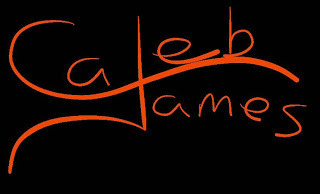
HAFFLING, set inManhattan, is the story of sixteen year old Alex Nevus, his little sisterAlice, and his mentally ill mother, Marilyn. Alex is a brilliant guydetermined to hold his family together against a backdrop of unbearabletragedy. Years earlier he and his sister were placed in a foster homewhere Alice was molested, and Alex pushed the man who did it to hisdeath. He's also haunted by the specter of his own madness. Ever since he can remember he's had asix-inch bare-breasted fairy named Nimby sitting on his shoulder, that combinedwith a schizophrenic mother gives him cause for worry. Further down on the list of things that keephim up at night is his growing crush on the most-perfect boy in his class, whocurrently goes out with the most-perfect girl.
Since being reunited as afamily, Alex has become a master of knowing the rules. All of which goesto hell when his mother fails to show up for her disability hearing. Whenhe tracks her down to a park at the northern tip of NYC, his world comes undoneas he follows her into a parallel realm. There, he meets a power-hungry queen who would conquer the world, butrequires a suitable vessel to pass between the dimensions. She needs Alex...or at least parts of him tomake that happen.
HAFFLING is available as an ebook through amazon and Barnes and Noble, and as both an ebook and paperback through the publisher--Dreamspinner Press/Harmony Ink (it will eventually be available in paperback through other on-line sellers, as well.)
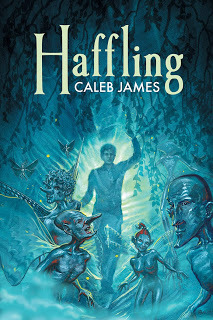
Amazon
Barnes and Noble
Dreamspinner Press/Harmony Ink
Published on July 13, 2013 05:38
Just Released!HAFFLINGby HAFFLING, set in Manhattan, is...
Just Released!HAFFLINGby

HAFFLING, set in Manhattan, is the story of sixteen year old Alex Nevus, his little sister Alice, and his mentally ill mother, Marilyn. Alex is a brilliant guy determined to hold his family together against a backdrop of unbearable tragedy. Years earlier he and his sister were placed in a foster home where Alice was molested, and Alex pushed the man who did it to his death. He's also haunted by the specter of his own madness. Ever since he can remember he's had a six-inch bare-breasted fairy named Nimby sitting on his shoulder, that combined with a schizophrenic mother gives him cause for worry. Further down on the list of things that keep him up at night is his growing crush on the most-perfect boy in his class, who currently goes out with the most-perfect girl.
Since being reunited as a family, Alex has become a master of knowing the rules. All of which goes to hell when his mother fails to show up for her disability hearing. When he tracks her down to a park at the northern tip of NYC, his world comes undone as he follows her into a parallel realm. There, he meets a power-hungry queen who would conquer the world, but requires a suitable vessel to pass between the dimensions. She needs Alex...or at least parts of him to make that happen.
HAFFLING is available as an ebook through amazon and Barnes and Noble, and as both an ebook and paperback through the publisher--Dreamspinner Press/Harmony Ink (it will eventually be available in paperback through other on-line sellers, as well.)

Amazon
Barnes and Noble
Dreamspinner Press/Harmony Ink
Published on July 13, 2013 05:38
Just Released!HAFFLINGby HAFFLING, set in Man...
Just Released!HAFFLINGby

HAFFLING, set in Manhattan, is the story of sixteen year old Alex Nevus, his little sister Alice, and his mentally ill mother, Marilyn. Alex is a brilliant guy determined to hold his family together against a backdrop of unbearable tragedy. Years earlier he and his sister were placed in a foster home where Alice was molested, and Alex pushed the man who did it to his death. He's also haunted by the specter of his own madness. Ever since he can remember he's had a six-inch bare-breasted fairy named Nimby sitting on his shoulder, that combined with a schizophrenic mother gives him cause for worry. Further down on the list of things that keep him up at night is his growing crush on the most-perfect boy in his class, who currently goes out with the most-perfect girl.
Since being reunited as a family, Alex has become a master of knowing the rules. All of which goes to hell when his mother fails to show up for her disability hearing. When he tracks her down to a park at the northern tip of NYC, his world comes undone as he follows her into a parallel realm. There, he meets a power-hungry queen who would conquer the world, but requires a suitable vessel to pass between the dimensions. She needs Alex...or at least parts of him to make that happen.
HAFFLING is available as an ebook through amazon and Barnes and Noble, and as both an ebook and paperback through the publisher--Dreamspinner Press/Harmony Ink (it will eventually be available in paperback through other on-line sellers, as well.)

Amazon
Barnes and Noble
Dreamspinner Press/Harmony Ink
Published on July 13, 2013 05:38
April 24, 2013
I've not had the chance to post in a while--very busy wit...
I've not had the chance to post in a while--very busy with book projects and a variety of professional trainings. Over the past few months I've been blessed to have two book projects given the green light. This includes my first Young Adult (YA) novel--HAFFLING(Dreamspinner Press/Harmony Ink), which will be released Fall 2013. This will be my first outing with a pseudonym--Caleb James. At some point I'll revisit the hows and whys authors use pen names.
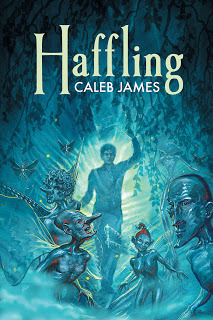
Today's topic is this--One of the less glamorous jobs of a writer is to be able to condense a book into a variety of synopses, blurbs, jacket copy etc and to do it fast. Faced with my young adult novel Haffling about to shoot down the production conveyer belt I must reduce 330 pages of teen angst into two hundred words or less. Here's my morning's shot at it with help from Elizabeth Fitzgerald and the editorial staff at Dreamspinner. All comments are gratefully appreciated.
All sixteen year old Alex Nevus wants is to be two years older and become his sister Alice's legal guardian. That, and he'd like his first kiss, preferably with Jerod Haynes. Sadly, wanting something and getting it, are very different. Strapped with a mentally ill mother, he fears for his own sanity--having a fairy on his shoulder that only he can see doesn't help. Jerod Haynes has a girlfriend, and his mother's schizophrenia places Alice and him in constant jeopardy of being carted back into foster care.
When Alex's mother goes missing, everything falls apart. Frantic, he tracks her to a remote corner of Manhattan and is transported to another dimension--the land of the Unsee, the realm of the Fey. There he finds his mother held captive by the power-mad Queen May, and he learns that he is half human and half fey – a Haffling.
As Alex's human world is being destroyed, so too the Unsee is being devoured by a ravenous mist. Fey is vanishing and May needs to cross into the human world. She needs something that only Alex can provide and she will stop at nothing to possess it...to possess him.

Today's topic is this--One of the less glamorous jobs of a writer is to be able to condense a book into a variety of synopses, blurbs, jacket copy etc and to do it fast. Faced with my young adult novel Haffling about to shoot down the production conveyer belt I must reduce 330 pages of teen angst into two hundred words or less. Here's my morning's shot at it with help from Elizabeth Fitzgerald and the editorial staff at Dreamspinner. All comments are gratefully appreciated.
All sixteen year old Alex Nevus wants is to be two years older and become his sister Alice's legal guardian. That, and he'd like his first kiss, preferably with Jerod Haynes. Sadly, wanting something and getting it, are very different. Strapped with a mentally ill mother, he fears for his own sanity--having a fairy on his shoulder that only he can see doesn't help. Jerod Haynes has a girlfriend, and his mother's schizophrenia places Alice and him in constant jeopardy of being carted back into foster care.
When Alex's mother goes missing, everything falls apart. Frantic, he tracks her to a remote corner of Manhattan and is transported to another dimension--the land of the Unsee, the realm of the Fey. There he finds his mother held captive by the power-mad Queen May, and he learns that he is half human and half fey – a Haffling.
As Alex's human world is being destroyed, so too the Unsee is being devoured by a ravenous mist. Fey is vanishing and May needs to cross into the human world. She needs something that only Alex can provide and she will stop at nothing to possess it...to possess him.
Published on April 24, 2013 06:16
January 8, 2013
After many months...and a couple years in the writing...G...
After many months...and a couple years in the writing...GO TO HELL, my first paranormal thriller novel is alive. This is a highly personal book born out of my first-hand experience of the highly problematic relationship between the pharmaceutical companies and physicians. While clearly fiction, this a modern parable that sticks close to some bitter truths.
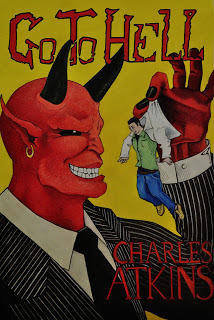 The e-version for Kindle, Nook and every other e-reader is up on amazon.com and Barnes and Noble, the paperback will soon follow.
The e-version for Kindle, Nook and every other e-reader is up on amazon.com and Barnes and Noble, the paperback will soon follow.
 The e-version for Kindle, Nook and every other e-reader is up on amazon.com and Barnes and Noble, the paperback will soon follow.
The e-version for Kindle, Nook and every other e-reader is up on amazon.com and Barnes and Noble, the paperback will soon follow.
Published on January 08, 2013 01:55



